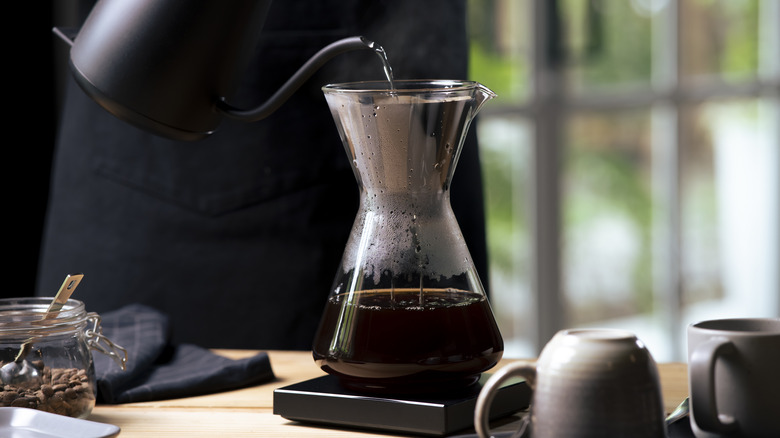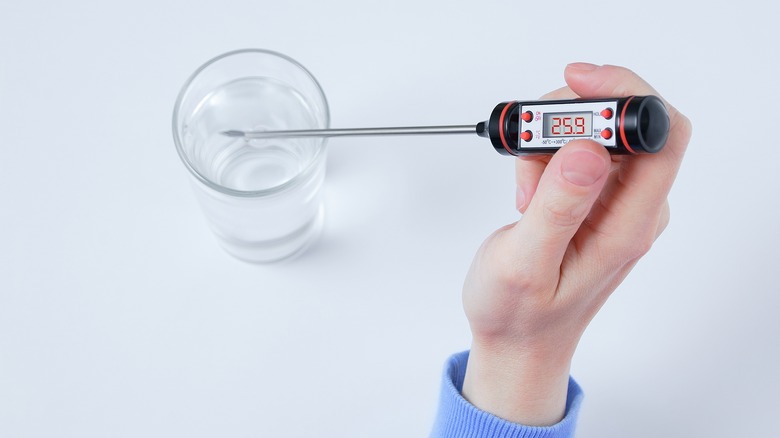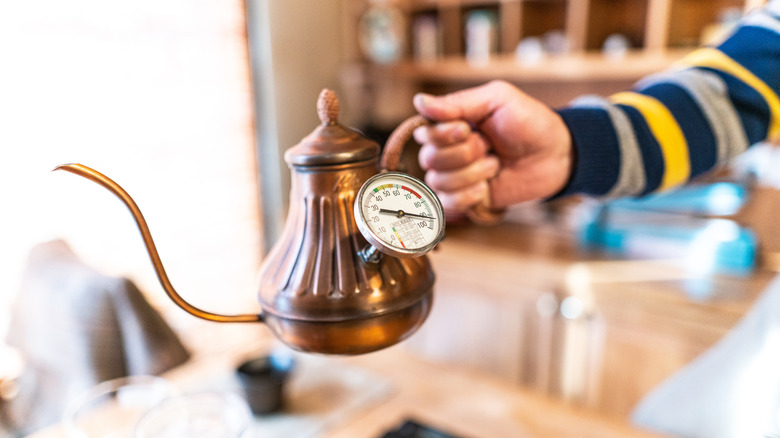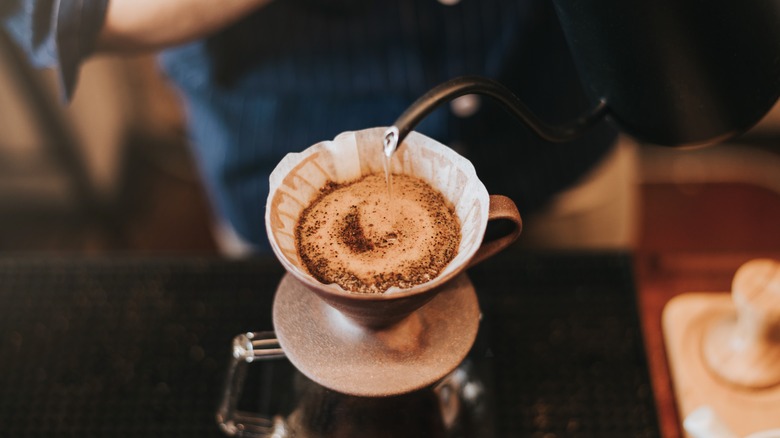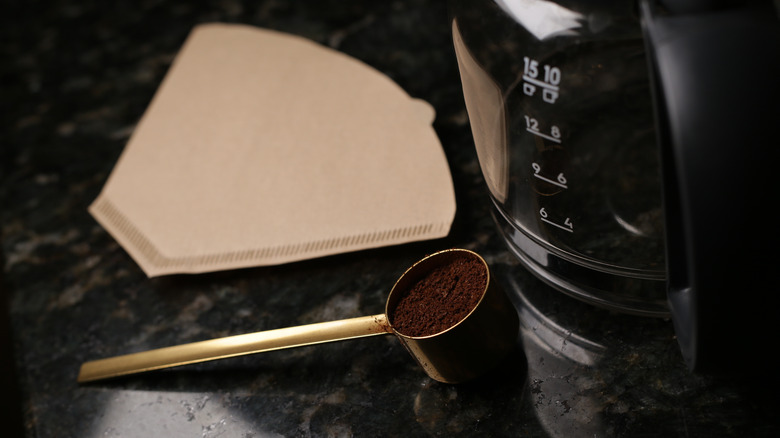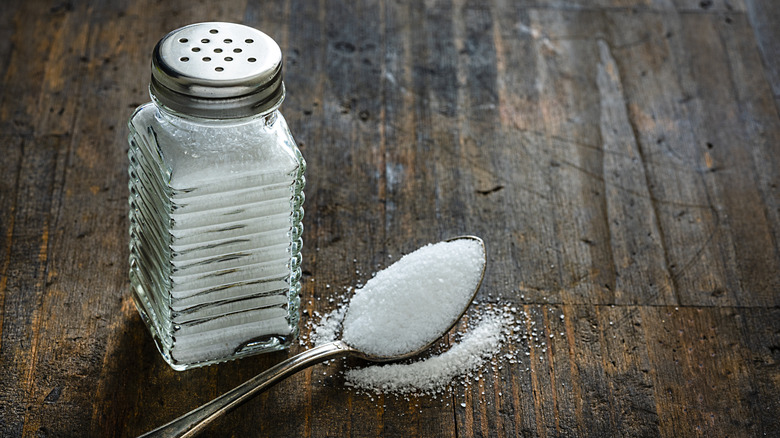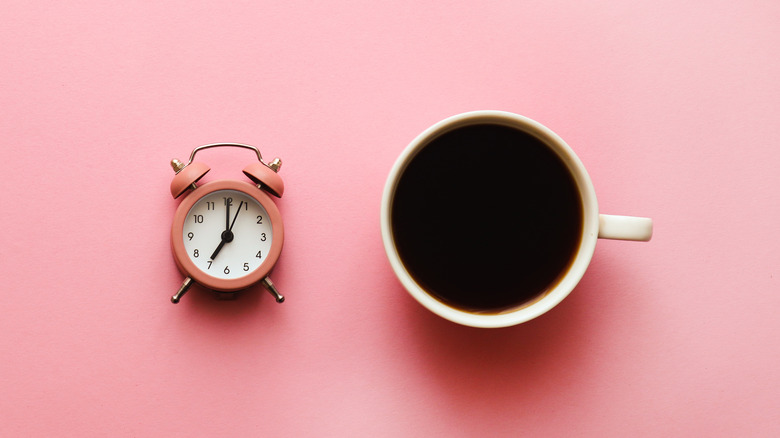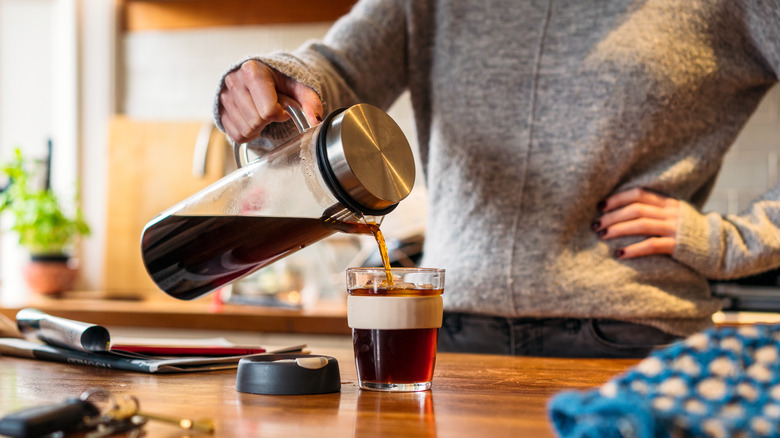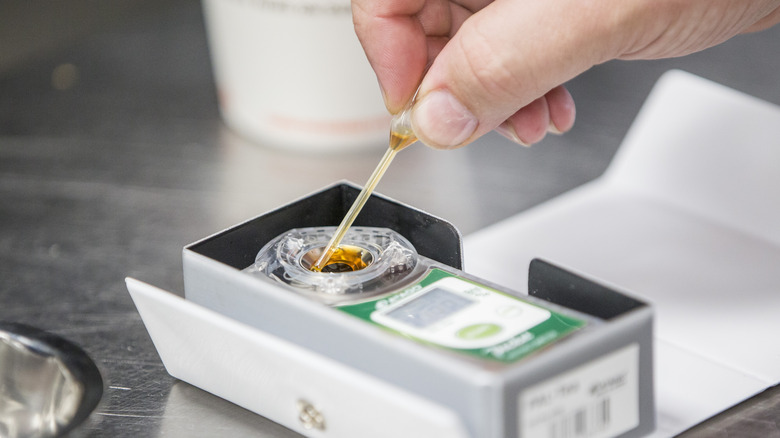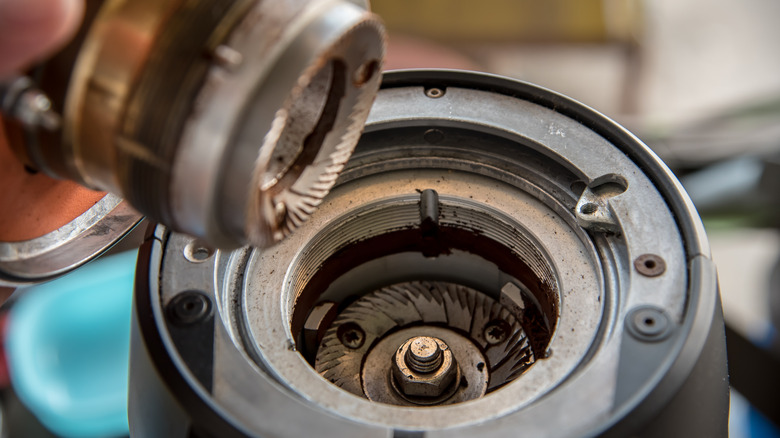12 Hacks For Brewing The Perfect Cup Of Coffee
From the science of extraction to the excitement of coffee bloom, the vocabulary of coffee geekery is as rich as the beverage itself. The latest trends in coffee culture are constantly pushing the boundaries, with top baristas exploring new techniques and tools in their quest for the perfect brew.
Yet, the results of brewing coffee at home are often less rewarding. There are just so many variables. The grind size, water temperature, and brew time — those small details often make the greatest difference. And with so many brewing methods, each presents its own set of rules and nuances.
Mastering the precise ratio of coffee to water, the perfect brewing temperature, or water pH can transform your home-brewed coffee from a mundane cup to a highly delectable sip you'd proudly share with anyone. But, just like with any worthwhile craft, this will require patience and dedication. Luckily, there are a few essential hacks that will bring you up to speed.
1. Use a thermometer to measure the water temperature
Did you know the temperature of the water makes all the difference when brewing coffee? If your water is too hot, you'll end up with a bitter and sour cup that tastes like burnt rubber. But if it's too cold, you'll miss out on the rich and complex flavors that make the coffee so delicious. So, here's how to nail it every time — use a simple thermometer. Digital or liquid-filled, it doesn't matter; as long as it's calibrated, you will get results.
First, bring your water to a rolling boil, but keep it from sitting there too long. You want it to be between 195 and 205 degrees Fahrenheit, which is optimal for manual brewing methods. Wait about a minute after boiling, then pour the water over your coffee grounds slowly and steadily.
Of course, not all coffees are created equal. Darker roasts are more soluble than lighter ones, so they might need a slightly lower temperature to avoid over-extraction. Experiment with different roasts and grinds until you find your sweet spot.
2. Invest in a gooseneck kettle
If you love making pour-over coffee at home, you know how important it is to have the right tools for the job. And one of them is the gooseneck kettle, a sleek and elegant accessory that can elevate your brewing experience. The slender spout of a gooseneck kettle gives you total control over the water flow, ensuring that every coffee ground is evenly saturated. The result is a smooth and balanced brew.
Many gooseneck kettles also come with a built-in thermometer that helps you hit the ideal brewing temperature. Thanks to their high-quality stainless steel construction, they are durable and easy to maintain. Before buying one, think about how much coffee you usually drink to get your size right. Regardless of your preferences, it's a worthwhile investment. Not only will it look great in your kitchen, but it will outlast any electric kettle, and you can use it to brew some green tea should you ever decide to quit coffee.
3. Bloom the coffee grounds
One technique that's been making the rounds in the brewing world is coffee blooming. When water first meets the coffee grounds, it triggers the release of carbon dioxide, causing coffee to "bloom." This fascinating phenomenon is a delightful indicator of coffee freshness and is responsible for a more pronounced aromatic character. Including a degassing step before brewing may help unlock a more developed flavor.
To bloom your coffee, you only need to pour a small amount of hot water (about twice the weight of the coffee grounds) over the grounds and let it sit for 30 to 40 seconds. As the carbon dioxide is released, you'll see the grounds bubble and foam. Once the bloom has finished, you can pour the rest of the water.
In espresso-making, this step is called pre-infusion. Whether using a semi-professional machine with a built-in pre-infusion function or a manual one where you control the water flow, this step involves a gentle, low-pressure water burst to the coffee puck before the main extraction. This delicate play of pressure and timing can elevate your home-brewed espresso to barista excellence.
4. Ingenuity of a simple paper filter
While it may seem like a simple piece of equipment, paper filters play a surprisingly important role in your coffee's flavor: They help remove unwanted oils and residues from the coffee grounds. These oils add bitterness and astringency to your coffee, so removing them will create a cleaner, more balanced cup. Paper filters are efficient and can eliminate up to 99% of the oil from coffee, removing other notorious contributors to bitterness like fines or grounds. A pro tip: Rinse the filter with hot water to avoid subtle paper flavor notes in your coffee.
Paper filters don't just improve the taste of your coffee; they also can make it healthier. According to Harvard Health, paper-filtered coffee has fewer diterpenes than unfiltered coffee, such as Turkish or French press. Diterpenes are compounds linked to a higher risk of heart disease, so using a paper filter lets you enjoy your coffee without worrying about these harmful substances.
However, paper filters may have a downside too. While they weed out unwanted elements, they may potentially thin out the richness of your coffee. So, if you're seeking a robust brew with all the natural oils and flavors, you should probably skip to the next hack.
5. Brew you coffee with pH-perfect water
Making a perfect brew is as much about the water as the beans. However, the water's hardness, often a stumbling block with tap water, is just the tip of the iceberg. The real game-changer is the pH level. The sweet spot for the coffee is a pH that dances between 7 and 8.5. Drift below 7, and your coffee risks becoming tart. Venture above 8.5, and you may find yourself grappling with a bitter aftertaste.
If you want to bring out the best in your coffee beans, invest in a pH meter. Sounds super geeky, but it will help you measure the acidity of your water, ensure consistency in your brews, and troubleshoot any problems. Don't bother with a litmus paper, though; it won't deliver the necessary precision.
Mastering the pH balance of your water may take some trial and error. Begin with tap water but don't be afraid to experiment with filtered or bottled water. Just be sure to avoid distilled water, as it will make your coffee taste flat. Unless, of course, you plan to add some minerals back into it.
6. Add a pinch of salt to reduce bitterness
When it comes to coffee and salt, you wouldn't necessarily put the two together. You'd be surprised, however. A tiny pinch of salt can be the secret ingredient that tames the bitter edge of the coffee. Salt forms connections with coffee's assertive compounds, resulting in a mellower, more balanced brew. It also brings out the coffee's natural sugars, lending your cup a more affluent sweetness. Moderation is key here, however.
So how much is too much? The amount of salt you add will depend on your salt tolerance and the coffee you're using. Darker roasts, which tend to be more bitter, require more salt. If you're using a pour-over method, you can add the salt to the water before you start brewing or mix it directly with grounds — works for instant coffee too.
Remember, you can always experiment with different types of salt. Kosher or sea salt are usually the best option; they have a milder flavor and dissolve easily. Table salt can be too strong and leave a metallic aftertaste. Try some flavored salts as well, like vanilla or cinnamon, for some enhanced aromatics.
7. Brew your coffee using a timer
Your perfect cup of coffee can be just minutes away. Quite literally. With the help of a kitchen timer. This seemingly insignificant gadget can consistently transform your daily brew into an enjoyable experience by giving you control over one of the most critical variables in coffee brewing: time.
The duration of your brew directly influences the strength and taste of your coffee. A timer will be your best guard against the risk of under or over-extraction, which can leave your coffee tasting weak or overly bitter. Whether you prefer a drip coffee maker or a French press, a timer will help you stay on top of your brewing tasks.
Moreover, a timer can be a lifesaver when brewing for a crowd. It ensures synchronicity in brewing multiple cups, saving you from the chaos of juggling different brew times. It's a small detail that makes a big difference when playing barista for your friends.
8. Try cold brew coffee if you're sensitive to acidity
According to Healthline, the acidity in coffee can be a major trigger for heartburn, acid reflux, and other digestive woes. But here's the good news: If you're sensitive to acidity, cold brew coffee might be the key to a smoother, more stomach-friendly beverage. Unlike regular coffee, using cold water for brewing gives the acids less chance to seep out, leading to a milder, less acidic coffee.
To further optimize your cold brew, a few simple tweaks can make a world of difference. Start with a coarse grind for your coffee beans. The larger particles offer less surface area for acid extraction, keeping the acidity in check. Next, opt for filtered water with a higher pH, which will contribute to a milder brew. Finally, keep an eye out for darker roasts. The darker the beans, the less tart your beverage is going to be. Sadly, though, this also means fewer beneficial antioxidants in your cup.
9. Weigh your beans and water
One strategy often overlooked by amateur coffee makers lies in a plain and simple device: a precision scale. Adopting a scale in your coffee brewing process can have transformative results, elevating your everyday brew to a coffeehouse-worthy beverage. A scale plays an integral role in maintaining consistency in your brews by ensuring you're using the correct balance of coffee to water. This ratio, often considered the backbone of a great coffee, is vital to its taste.
Less water, more coffee means a more robust coffee, right? Well, it's not that simple. Depending on the coffee, the ratios can vary from 1:1 to 1:2. for coffee to reveal itself. That's why a high-precision digital scale is your best bet. It offers pinpoint accuracy in measuring coffee and water, ensuring your coffee always hits the mark. And with the plethora of handy apps available today, you can calculate the ideal measurements in a snap, regardless of your brewing method. So stop all the guesswork and start making coffee you'll be proud of.
10. Measure the extraction level with a refractometer
If you're a coffee aficionado not intimidated by the utmost coffee geekery, you might consider adding a coffee refractometer to your arsenal. This gadget, more commonly found in scientific labs, can help you measure how well you've extracted the flavor and aroma from your coffee grounds. The refractometer works by analyzing how light bends through a sample of your brew, giving you a precise number that reflects the extraction level.
Why does this matter? Because different coffee blends have different "sweet spots" — the ideal extraction levels that produce the most balanced and delicious cups. The refractometer can help you find them, so you can avoid under-extracting (which leaves your coffee acidic) or over-extracting your coffee (which causes bitterness).
To get the best out of your refractometer, wipe off any residue from the previous samples and use clean and dry droppers. Also, taking multiple readings and averaging them out will give more precise results.
11. Start writing a coffee journal
Revolutionizing your coffee game at home could be as simple as maintaining a journal. This humble habit can guide you towards refining your skills as a coffee brewer, all while honing your palate. A record of the diverse types of beans, your chosen brewing techniques, and the resulting tasting notes will guide you in fine-tuning your coffee experience based on your preferences. A simple journal will also help you troubleshoot brewing problems, document your progress, and give enough context to share your insights and tips with fellow coffee lovers.
You can now choose from mobile journaling apps or specialized diaries with dedicated sections and infographics. But if you prefer a minimalist approach, a simple notebook can serve just as well. The key here is consistency and meticulous documentation of every nuance of your brewing process. Little by little, you will become a coffee master with something to show for it.
12. Swap you blade grinder for a burr grinder
If you're still using a blade coffee grinder, you're missing out on a whole world of flavor. Blade grinders chop up the beans with a spinning blade, resulting in uneven and unpredictable grounds. This can ruin your coffee, as the extraction will vary depending on the size of the particles. You might end up with a bitter, sour, or watery brew. The good news is there's a better way to grind your coffee, and if you ask us — it's worth every penny.
Burr grinders are the gold standard for coffee grinding. They use two rotating burrs that crush the beans to a uniform size. You can adjust the distance between the burrs to control the fineness of the grind, depending on your brewing method. Whether you prefer espresso, drip, or French press, burr grinders produce consistent and flavorful grounds that make your coffee taste undeniably better. Trust us, once you invest in a burr grinder, you'll never want to go back.
